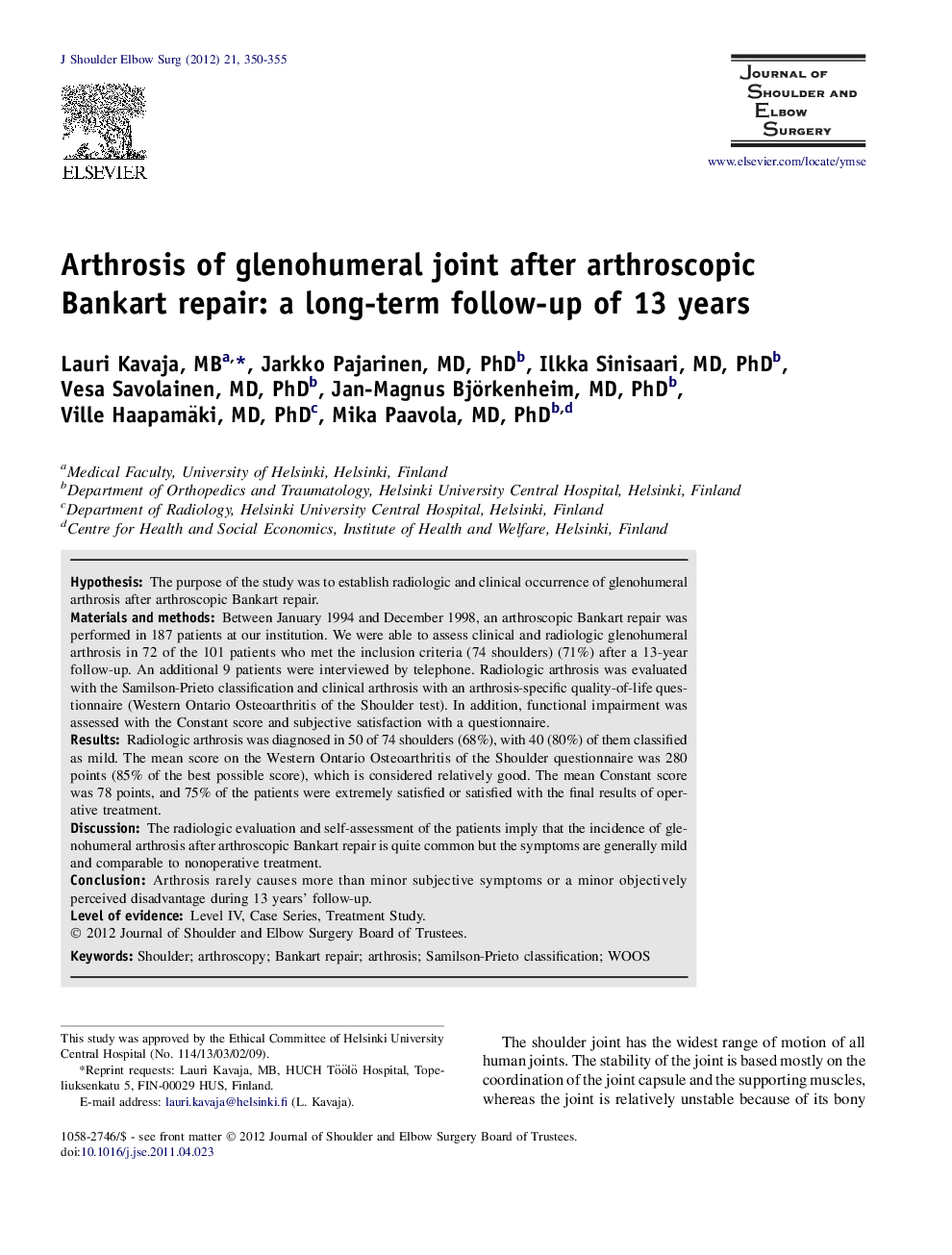| Article ID | Journal | Published Year | Pages | File Type |
|---|---|---|---|---|
| 4074599 | Journal of Shoulder and Elbow Surgery | 2012 | 6 Pages |
HypothesisThe purpose of the study was to establish radiologic and clinical occurrence of glenohumeral arthrosis after arthroscopic Bankart repair.Materials and methodsBetween January 1994 and December 1998, an arthroscopic Bankart repair was performed in 187 patients at our institution. We were able to assess clinical and radiologic glenohumeral arthrosis in 72 of the 101 patients who met the inclusion criteria (74 shoulders) (71%) after a 13-year follow-up. An additional 9 patients were interviewed by telephone. Radiologic arthrosis was evaluated with the Samilson-Prieto classification and clinical arthrosis with an arthrosis-specific quality-of-life questionnaire (Western Ontario Osteoarthritis of the Shoulder test). In addition, functional impairment was assessed with the Constant score and subjective satisfaction with a questionnaire.ResultsRadiologic arthrosis was diagnosed in 50 of 74 shoulders (68%), with 40 (80%) of them classified as mild. The mean score on the Western Ontario Osteoarthritis of the Shoulder questionnaire was 280 points (85% of the best possible score), which is considered relatively good. The mean Constant score was 78 points, and 75% of the patients were extremely satisfied or satisfied with the final results of operative treatment.DiscussionThe radiologic evaluation and self-assessment of the patients imply that the incidence of glenohumeral arthrosis after arthroscopic Bankart repair is quite common but the symptoms are generally mild and comparable to nonoperative treatment.ConclusionArthrosis rarely causes more than minor subjective symptoms or a minor objectively perceived disadvantage during 13 years’ follow-up.
